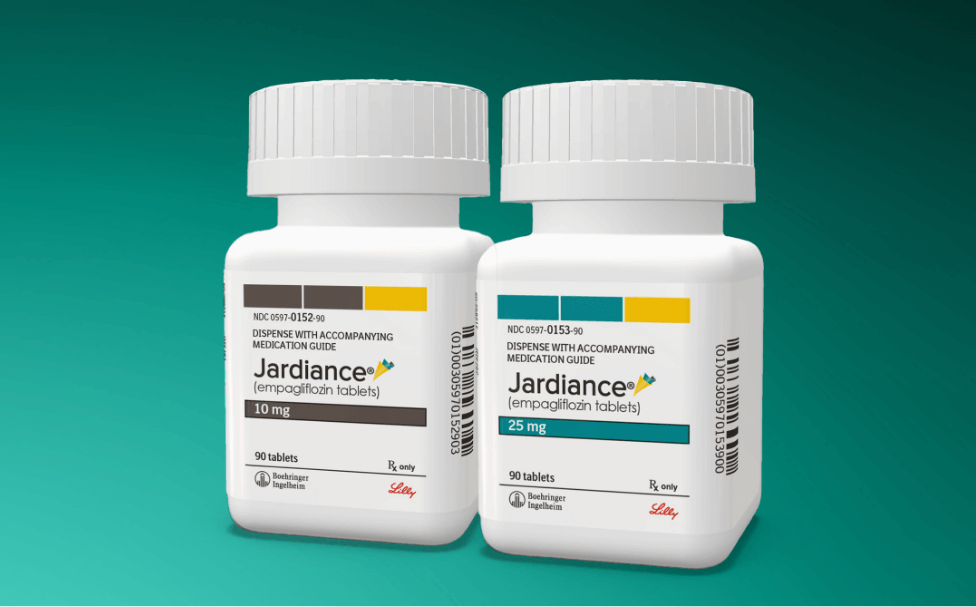 |
| Unlike some other antidiabetic medications that have been shown not to affect DR risk in T2DM patients, this analysis found that co-administration of an SGTL2i drug and metformin may reduce disease progression when taken for longer than two years. Photo: Boehringer Ingelheim. Click image to enlarge. |
Many patients with type 2 diabetes mellitus (T2DM) take antidiabetic medications to help regulate blood sugar levels and stave off complications, although most have shown little to no efficacy in reducing the risk of the most common complication: diabetic retinopathy (DR). However, excluded from the majority of this research is one widely available drug for T2DM—sodium-glucose co-transporter-2 inhibitors (SGLT2is), such as empaglifozin, dapaglifozin and canaglifozin—which is often used as an add-on therapy for metformin. This gap in knowledge led investigators to conduct a study to determine the effect of SGLT2is on DR risk. Interestingly, they found that only long-term (>two years) use of the drug lowered the risk of DR progression, while short-term use (<two years) was actually associated with an increased risk of DR.
The nationwide population-based study involved 3,432,911 adults with T2DM living in Taiwan. The researchers analyzed the cohort’s clinical data, focusing on the primary outcome of DR progression, which they determined through procedure codes in patients’ medical records.
In four years, the cumulative incidence of DR progression was considerably decreased in those taking SGLT2is and metformin (SGLT2is group; average age: 60.7) compared with controls. When looking at usage duration, the researchers noted in their Scientific Reports paper that, “The use of SGLT2is for less than one year and one to two years were associated with a significant increase in the risk of DR progression (adjusted hazard ratios: 1.56 and 1.88, respectively); however, the risk markedly reduced if the SGLT2is regimen was used for more than two years (adjusted hazard ratio: 0.41).”
The researchers noted that there’s a growing body of evidence to support the early deterioration of DR with non-insulin treatments. In preliminary studies, they pointed out, the GLP-1RAs—which aid in lowering glucose after mealtime—”were associated with a temporary worsening of DR that resolved with continuing treatment,” which long-term studies have also verified. For example, one found that in individuals with T2DM, more than six months of treatment with exenatide (a GLP-1RA) resulted in the progression of DR in 29.7% of patients, while DR improved in 19.4% of patients. Interestingly, the proportion of patients with the progression of DR increased with reductions in HbA1c. However, by prolonging treatment (1.2 years on average), the number of patients whose DR improved jumped to 62%.
“Some hypotheses, including osmotic force, vascular endothelial growth factor (VEGF), synergy between hypoxia and VEGF and potential effects of tight glycemic control, have been proposed to explain the early deterioration of DR,” the researchers explained in their paper.
The team concluded from their findings that co-administration of metformin and SGLT2is appears to significantly reduce the risk of DR progression in the long-term, though short-term use may markedly increase risk. “For DR patients, the continued SGLT2is add-on therapy may yield benefits beyond glycemic control,” they wrote, while cautioning that “the eyes of patients with an elevated ocular risk should be evaluated before commencing aggressive therapies to achieve glycemic control.” Overall, they note that “long-term treatment with an SGTL2i without interruption may effectively prevent DR progression.”
| Li JX, Hung YT, Bair H, Hsu SB, Hsu CY, Lin CJ. Sodium‑glucose co‑transporter 2 inhibitor add‑on therapy for metformin delays diabetic retinopathy progression in diabetes patients: a population‑based cohort study. Scientific Reports. 2023:13:17049. |

